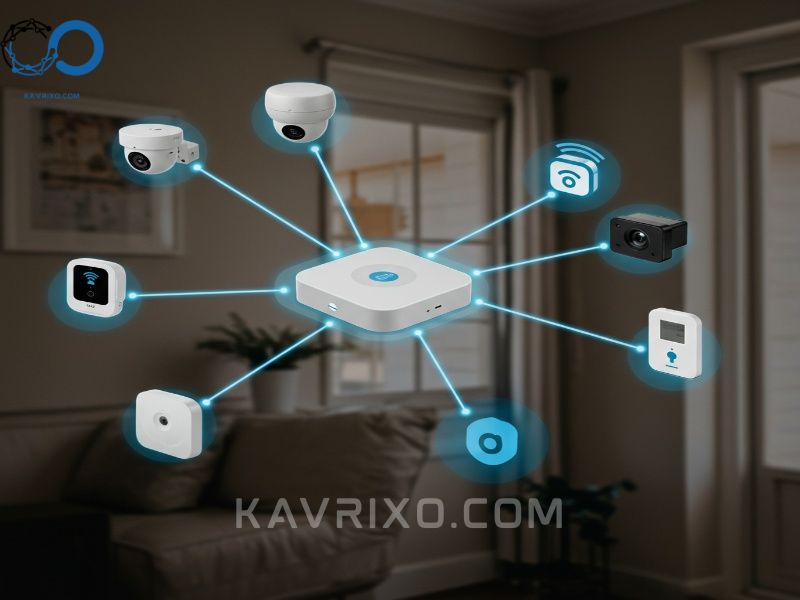In the modern era of the smart home, convenience and control are paramount. For many homeowners, the concept of security is no longer limited to loud sirens and flashing lights; it’s about seamless integration, remote access, and, most importantly, voice control. Amazon’s Alexa ecosystem has become the central nervous system for millions of smart homes, making the demand for reliable alarm systems that work with Alexa higher than ever before.
Integrating your home security setup with a virtual assistant like Alexa fundamentally changes how you interact with your protection system. No longer do you need to fumble with keypads or apps just to arm the system before rushing out the door. A simple voice command can secure your entire property, check the status of your sensors, or even trigger emergency protocols.
This comprehensive guide will explore the leading solutions, technical considerations, and practical steps necessary to establish a highly functional and reliable Alexa home security system, ensuring you maximize both safety and convenience.
Contents
- 1 The Rise of Voice-Controlled Security: Why Alexa Matters
- 2 Understanding Compatibility: How Alarm Systems Connect to Alexa
- 3 Top Contenders: The Best Alarm Systems That Work With Alexa
- 4 Key Features of a Premium Alexa Home Security System
- 5 Step-by-Step Setup: Integrating Your Alarm System with the Alexa App
- 6 Security and Privacy Considerations for Voice-Controlled Alarms
- 7 Future-Proofing Your Smart Security Investment
The Rise of Voice-Controlled Security: Why Alexa Matters
The shift toward voice-controlled security is driven by a powerful combination of accessibility, speed, and user experience. When security events occur, every second counts, and the ability to instantly check the status or arm the system without locating a phone or running to a keypad provides a significant advantage.
Alexa acts as a universal translator for disparate smart devices. While alarm systems historically operated within a closed, proprietary loop, Alexa’s open platform allows systems from different manufacturers—cameras, door locks, and alarm panels—to communicate and function as a unified defense network.
The Convenience Factor: Automation and Accessibility
The primary advantage of using alarm systems that work with Alexa is the sheer convenience they offer. Imagine preparing for bed and realizing you forgot to arm the system. Instead of trekking downstairs, you can simply say, “Alexa, arm the security system in Away mode.”
This integration is particularly vital for routines. Using Alexa Routines, you can automate complex actions. For instance, your “Good Night” routine could simultaneously:
1. Lock all smart doors.
2. Turn off all lights.
3. Set the thermostat back.
4. Arm the security system to “Stay” mode.
This level of automation ensures consistent security deployment every single night, minimizing human error.
Beyond Simple Arming: Advanced Voice Commands
Modern alexa home security system integrations go far beyond basic arming and disarming. Advanced commands often include:
- Status Checks: “Alexa, is the front door contact sensor closed?” or “Alexa, what is the status of my alarm system?”
- Triggering Scenes: “Alexa, trigger emergency lighting” (if linked to a smart lighting system).
- Temporary Disarming (with Passcode): While disarming via voice is often restricted for security reasons, some systems allow it if a specific, pre-set voice passcode (often a four-digit PIN) is spoken immediately after the command.
This enhanced control makes the system more intuitive and accessible for all members of the household, including those who may not be tech-savvy.
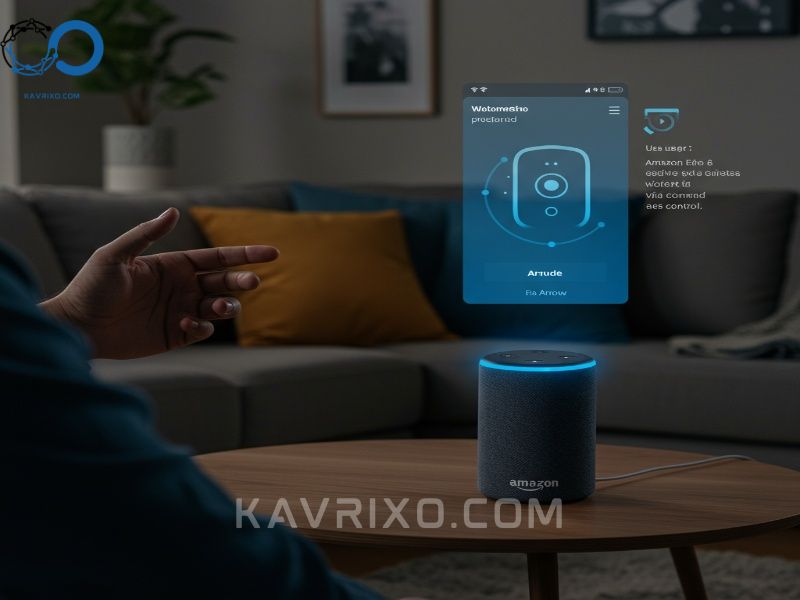
Understanding Compatibility: How Alarm Systems Connect to Alexa
Not all security systems are created equal when it comes to smart home integration. The level of functionality you gain depends heavily on the specific communication method employed by the manufacturer. Understanding these methods is crucial when selecting the ideal alexa home security system.
Different Integration Methods: Skills vs. Native Support
There are two primary ways an alarm system can communicate with Alexa:
1. Native Integration (API-Level Support)
Systems with native integration—often those built directly into Amazon’s ecosystem—tend to offer the smoothest and most feature-rich experience. The most prominent example here is Ring Alarm, which is owned by Amazon. Because the communication is built-in from the ground up, latency is low, and complex features like linking cameras directly to an Echo Show are seamless. These systems usually appear automatically in the Alexa app without needing a separate “Skill.”
2. Alexa Skills
The vast majority of third-party alarm systems that work with alexa utilize Alexa Skills. A Skill is essentially an app that lives within the Alexa ecosystem, allowing Alexa to understand and relay commands to the security system’s proprietary server.
- Pros: Highly versatile; most major brands (SimpliSafe, ADT, Abode) use this method.
- Cons: Requires an extra step of enabling the Skill; functionality can sometimes be limited by what the Skill developer allows (e.g., often restricting voice disarming).
Essential Protocols: Z-Wave, Zigbee, and Wi-Fi
The physical components of your alarm system (door sensors, motion detectors, sirens) communicate using various wireless protocols. For robust security integration, the alarm panel itself must be able to bridge these protocols into the Wi-Fi network that Alexa uses.
- Z-Wave and Zigbee: These are low-power mesh networks specifically designed for smart home devices. Many high-quality alarm sensors rely on these protocols because they offer excellent battery life and range. When a system (like Ring or SimpliSafe) uses these protocols, the main hub acts as the translator, sending status updates to Alexa via Wi-Fi.
- Wi-Fi: Simpler devices, particularly cameras and video doorbells, often connect directly via Wi-Fi. While easy to set up, they can consume more power and potentially clog up a busy home network.
A comprehensive alexa home security system often uses a combination of these, routing all traffic through a robust, internet-connected hub that possesses the necessary Alexa Skill or native API key.
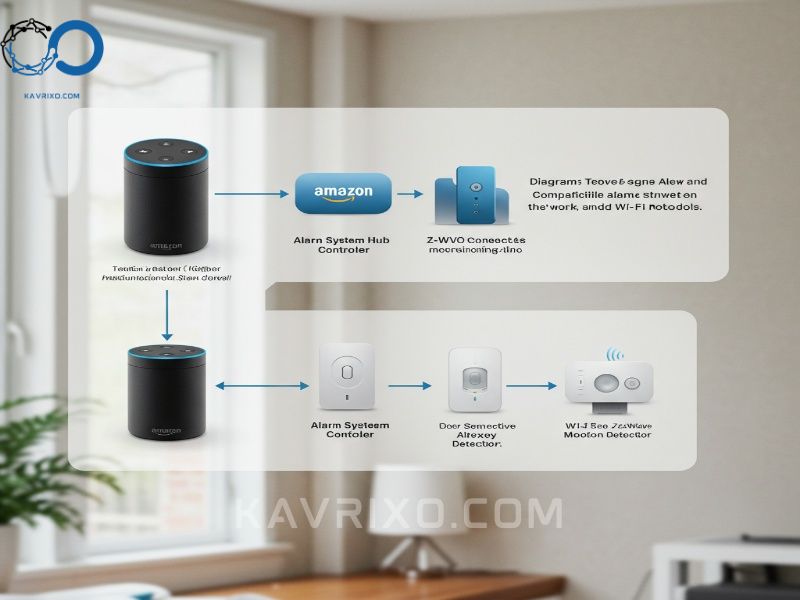
Top Contenders: The Best Alarm Systems That Work With Alexa
When choosing an alarm system that works with Alexa, performance, reliability, and the depth of integration are key differentiators. While the market is flooded with options, a few systems consistently rise to the top due to their user-friendly design and robust compatibility.
Ring Alarm: Deepest Native Integration
Ring Alarm, being an Amazon company, offers arguably the most seamless integration experience. It is designed from the ground up to be an alexa home security system.
Integration Highlights:
- Native Control: No separate skill is needed. Once the Ring system is set up, Alexa automatically recognizes the devices (sensors, motion detectors, keypads).
- Voice Disarming: Ring allows voice disarming, but only after you enable a mandatory four-digit voice code, providing a necessary layer of security protection against accidental or unauthorized disarming.
- Linked Devices: Integration extends far beyond the alarm panel. If you have Ring video doorbells or cameras, Alexa can announce when motion is detected and show a live feed instantly on an Echo Show device.
- Professional Monitoring: Ring offers affordable professional monitoring plans, which is a major draw for users who want 24/7 peace of mind alongside their smart features.
SimpliSafe: Reliability Meets Smart Control
SimpliSafe is known for its reliability, ease of DIY installation, and highly customizable components. SimpliSafe uses an Alexa Skill to bridge the gap between its proprietary system and the Amazon ecosystem.
Integration Highlights:
- Robust Arming: Users can easily arm the system via voice command (Home or Away mode).
- Status Checking: Alexa can report the status of the system, useful for confirming if you remembered to arm it before leaving.
- Limitations: For security reasons, SimpliSafe specifically prohibits voice disarming, even with a PIN. This is a deliberate design choice that some users prefer, as it adds a physical layer of security that cannot be overridden by voice capture.
- System Agnosticism: SimpliSafe focuses heavily on core security. While it integrates well with Alexa for arming/status, it generally remains separate from complex lighting or heating routines, appealing to those who want a dedicated security solution.
ADT and Professional Monitoring Options
For users who prefer the established reputation and comprehensive support of professional monitoring, major companies like ADT and Vivint have developed extensive compatibility with Alexa.
- ADT Command & Control: Modern ADT systems often utilize Z-Wave and integrate through a specific ADT Skill. This allows users to control system status, locks, and lights connected to the ADT panel via Alexa voice commands.
- Vivint: Vivint offers high-end, professionally installed systems that are deeply integrated with smart home components. Their integration is often more sophisticated, allowing Alexa to manage complex scenarios tied to the security status.
The key difference here is that while DIY systems like Ring and SimpliSafe offer optional monitoring, systems like ADT and Vivint require monitoring, bundling the Alexa functionality as part of a premium service package.
DIY vs. Professional Installation: Making the Right Choice
The decision between DIY installation (Ring, SimpliSafe, Abode) and professional installation (ADT, Vivint) greatly influences your experience with alarm systems that work with Alexa.
| Feature | DIY Installation (e.g., Ring) | Professional Installation (e.g., ADT) |
| Cost | Lower upfront cost, flexible monitoring fees. | Higher initial setup costs, mandatory long-term contracts. |
| Integration | Often deeper native integration with the Alexa ecosystem. | Relies heavily on the quality of the company’s dedicated Alexa Skill. |
| Maintenance | User is responsible for troubleshooting and sensor battery changes. | Company handles all maintenance and repairs. |
| Customization | Easier to add third-party sensors and customize zones. | System is locked down to specific, proprietary components. |
For the ultimate in seamless, flexible Alexa integration, DIY systems often provide more control, but professional systems offer unparalleled customer support and monitoring reliability.

Key Features of a Premium Alexa Home Security System
Simply being able to arm and disarm the system isn’t enough. A truly premium alexa home security system offers advanced features that leverage the power of voice automation to enhance safety, efficiency, and overall home awareness.
Routines and Scene Creation
The real magic of Alexa integration is realized through Routines. This feature allows the security system to participate actively in your daily life, not just react to threats.
Examples of Security-Focused Routines:
- The “Leaving Home” Routine: Activated by the voice command “Alexa, goodbye.” The routine checks if the system is armed (and arms it if not), ensures the garage door is closed, and adjusts the smart locks.
- The “Intruder Alert” Routine: While the alarm siren is the primary alert, Alexa can be programmed to respond to the siren trigger. This routine could turn on all interior and exterior lights (to draw attention), broadcast a warning message through every Echo speaker in the house (“Warning: Intruder Detected!”), and start recording on all cameras. This redundancy dramatically enhances the deterrent factor of alarm systems that work with alexa.
Sensor Management and Custom Alerts
A high-level integration allows Alexa to interact with individual security sensors, not just the main panel.
If your system uses Z-Wave or Zigbee sensors that are visible to Alexa (as is often the case with Ring), you can create specific alerts:
- Doorbell Integration: “Alexa, when someone presses the video doorbell, turn on the porch light.”
- Water Leak Detection: If a smart water sensor trips, Alexa can immediately announce, “Warning! Water leak detected in the basement,” providing instant, critical information.
This fine-tuned control means your security system becomes a comprehensive environmental awareness system, far surpassing traditional alarm functionality.
Camera Integration and Live View Access
For many users, the most valuable part of an alexa home security system is the camera integration, particularly when paired with an Echo Show (which has a screen).
- Instant Streaming: You can ask Alexa to show a live feed from any connected camera. “Alexa, show me the backyard camera.” The feed pops up instantly, whether the camera is a Ring, Wyze, or other compatible model.
- Two-Way Talk: Through the Echo Show, you can often engage in two-way communication with whoever is at the door or in view of the camera, turning the security system into an effective intercom.
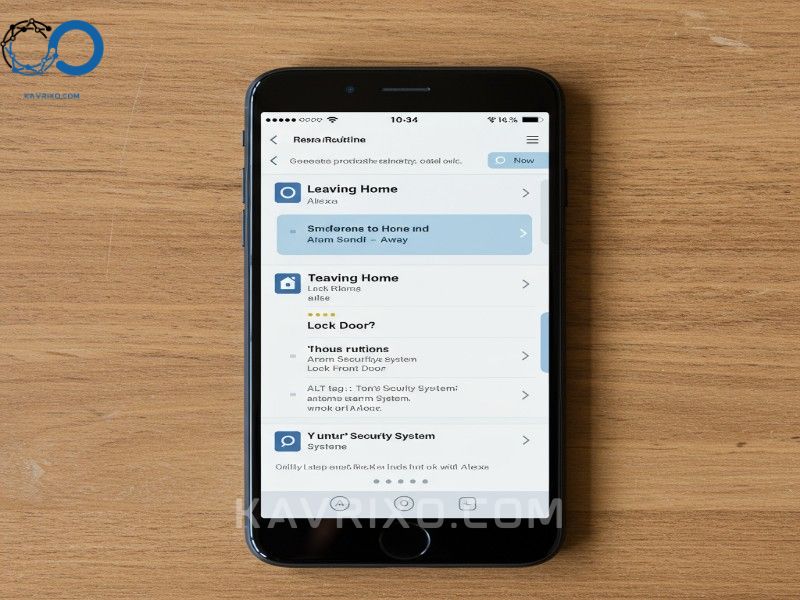
Step-by-Step Setup: Integrating Your Alarm System with the Alexa App
Integrating your new security system with Alexa is usually a straightforward process, but following the correct sequence is vital to ensure seamless operation and proper security protocol implementation.
Enabling the Required Alexa Skill
If your system is not Ring (which uses native integration), you must first enable the corresponding Skill.
- Open the Alexa App: Navigate to the “More” menu and select “Skills & Games.”
- Search for Your Brand: Type in the name of your alarm system manufacturer (e.g., SimpliSafe, Abode, ADT).
- Enable the Skill: Select the official Skill and tap “Enable to Use.”
- Account Linking: The app will redirect you to the security provider’s login page. You must enter your credentials for your alarm account to link the two services securely. This is the crucial step where Alexa gains the necessary authorization to interact with your system.
Device Discovery and Naming Conventions
Once the Skill is linked, Alexa needs to discover the devices associated with your alarm panel.
- Discovery: In the Alexa App, go to “Devices” and tap the plus sign (+) in the corner, then “Add Device.” Select your system brand, or simply say, “Alexa, discover devices.”
- Verify Components: Alexa should populate a list of all recognized devices: the main hub, individual sensors, and keypads.
- Critical Naming: Proper naming is essential for voice control. Avoid generic names like “Sensor 1.” Use clear, descriptive names like “Living Room Window” or “Garage Door.” This prevents confusion when issuing commands. If you have multiple devices in one room, ensure they are assigned to the correct “Group” within the Alexa App.
Troubleshooting Common Connection Issues
Despite the simplicity, users occasionally encounter hiccups when integrating alarm systems that work with Alexa.
- Authorization Failure: The most common issue is failure to authorize the Skill. Ensure the login credentials used during the linking process are identical to those used for your security system’s proprietary app.
- System Status: If the security system hub loses its internet connection (Wi-Fi or cellular backup), Alexa cannot communicate with it. Verify the hub is online and operational before troubleshooting the Alexa side.
- Skill Updates: Occasionally, manufacturers update their Skills, which may temporarily break functionality. If a command stops working, try disabling and re-enabling the Skill in the Alexa App.
- Voice Passcode Errors: If you enable voice disarming (on compatible systems like Ring), ensure you speak the passcode clearly and exactly as you set it up. Alexa will often deny the command if the passcode is not recognized perfectly.
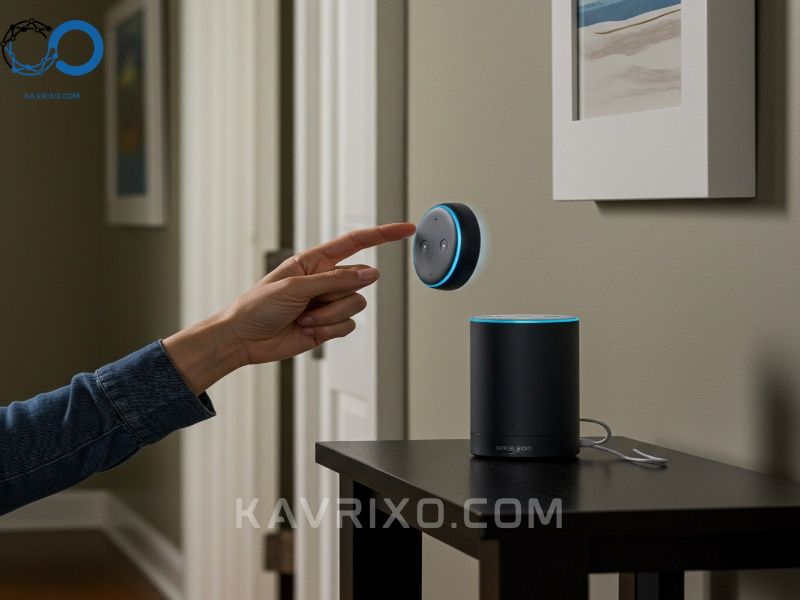
Security and Privacy Considerations for Voice-Controlled Alarms
The convenience of voice control must be balanced with robust security protocols. Implementing an alexa home security system requires careful consideration of privacy and access controls to ensure your system can’t be compromised by unauthorized users or accidental commands.
Two-Factor Authentication (2FA) for Security Skills
When linking your alarm system account to Alexa, always ensure that Two-Factor Authentication (2FA) is enabled on your security provider’s account. While Alexa controls the interface, 2FA protects the account itself, adding a crucial layer of defense against remote hacking attempts.
If a malicious actor somehow gained access to your Amazon account, 2FA on the security provider side would still prevent them from gaining control of the alarm system without a secondary verification code.
The Role of Passcodes in Disarming
As mentioned, many systems deliberately restrict voice disarming due to the potential for “voice spoofing” (using a recording of your voice) or simple eavesdropping.
If a system does allow voice disarming (like Ring), the mandatory voice passcode is non-negotiable.
- Security Best Practice: Choose a unique passcode that is different from your keypad PIN and your spoken disarming word. Never use easily guessed numbers like “1234.”
- Physical Security: Always rely on a physical keypad or the mobile app for disarming when possible. Reserve the voice command feature for moments of true necessity or convenience (like arming when your hands are full).
Data Encryption and Privacy Policies
Ensure your chosen alarm system provider uses end-to-end encryption for video feeds and stored data. Because Alexa acts as a conduit, you are trusting both Amazon and the security provider with potentially sensitive data. Review the privacy policies of both companies to understand how your recordings and system status data are used and stored.
Future-Proofing Your Smart Security Investment
The world of smart home technology evolves rapidly. Choosing alarm systems that work with Alexa today means selecting a platform that can adapt to future innovations.
The key to future-proofing your investment lies in open standards and robust connectivity:
- Protocol Flexibility: Systems that incorporate Z-Wave or Zigbee (like Ring and Abode) are generally more future-proof because these open standards allow them to integrate new, third-party sensors and devices as they become available, without relying solely on the manufacturer’s proprietary line.
- Regular Software Updates: Choose a system from a company (like SimpliSafe or Ring) that consistently pushes over-the-air firmware updates. These updates not only fix security vulnerabilities but also often add new Alexa integration features, ensuring your system remains compatible with Amazon’s evolving platform.
- Local Processing Capability: While Alexa is cloud-dependent, systems that can perform some tasks locally (even when the internet is down) offer greater reliability. This ensures the core alarm functions remain operational even if the connection to the Alexa cloud server is temporarily lost.
By selecting an adaptable and reliable foundation, you ensure your investment in an alexa home security system remains valuable for years to come, offering both cutting-edge security and unparalleled smart home convenience.
